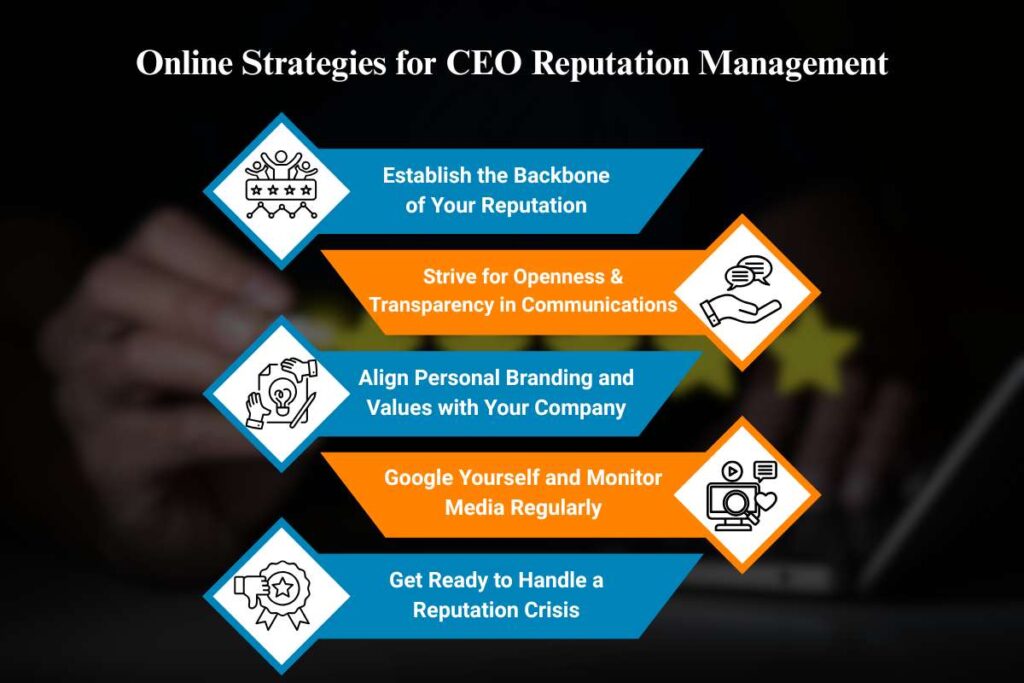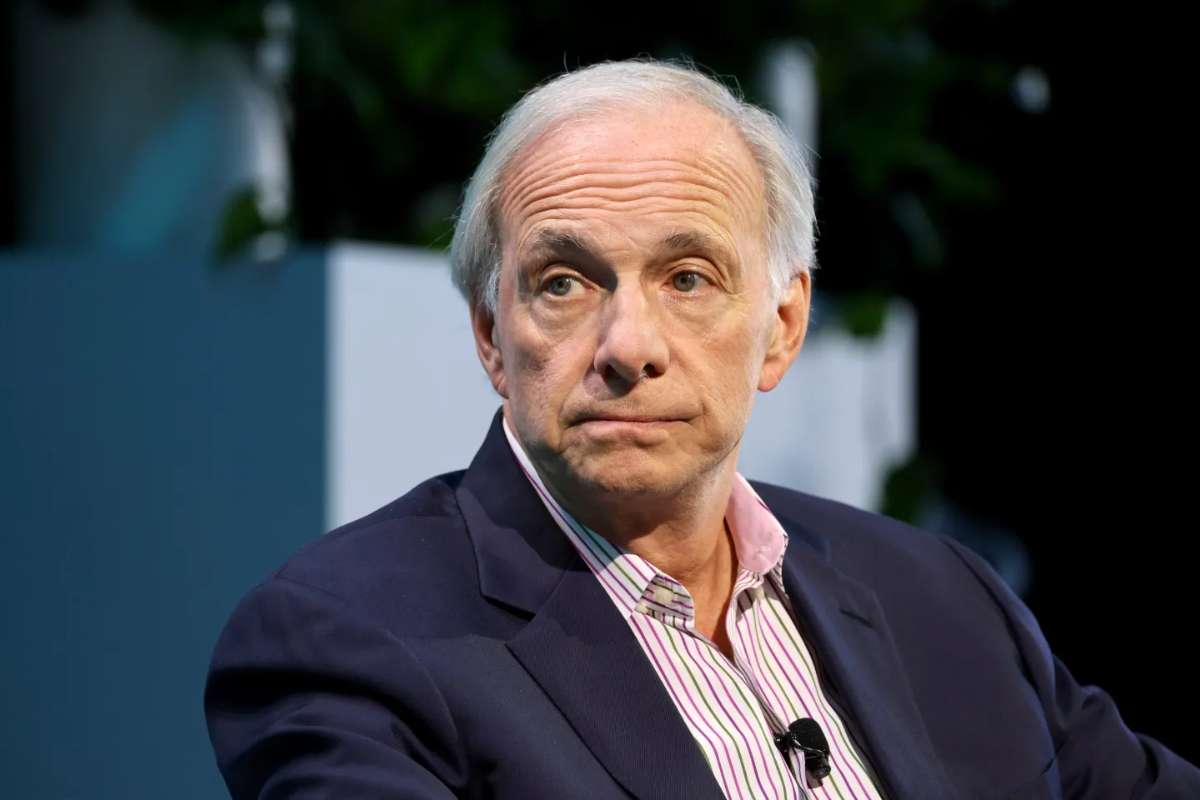In today’s world, a company’s goodwill is not just about its offerings; it’s often significantly shaped by the CEO’s public image. Their character, values, and integrity are woven into the company’s fabric, impacting everything from investor trust to customer loyalty.
What does a CEO’s reputation reveal about the business they lead? Is it a source of innovation and trustworthiness, or does it suggest risk and ethical challenges? How a chief executive is observed in the marketplace may provide an even better insight into the realities of a company’s character than an annual report.
The personal influence of the CEO and the company’s reputation will make a fascinating study of the subject and object. This is what we call CEO Reputation Management, which we are going to explore and learn how to make this mysterious, yet valuable, asset work for you.
What is CEO Reputation Management? Why does it Matter Today?
CEO reputation management is the act of influencing, managing, and improving the opinion of a chief executive officer so that they are viewed positively by employees, the public, and the market. The goal of chief executive reputation management is simple: The better someone thinks of a CEO, the better the organization looks.
Today, the reputation of a CEO is no longer just a personal issue but now a corporate asset. It affects nearly half of a company’s market value and its brand reputation. The relationship between CEO reputation and overall company performance is considered vital. A strong CEO reputation brings in investors, secures positive media coverage, and highlights the protection during bad times. For all of these reasons, strategic CEO reputation management must be a top priority for establishing confidence, morale, and sustainment for lasting return on investment.
Top 5 Online Strategies for CEO Reputation Management:

It is important to improve your online presence as a CEO. Nowadays, from customers, investors, to critics and competition, everyone is establishing their dominance in the market through the online medium. You don’t have you worry anymore, as we’ve got you covered. Here are a few effective CEO Reputation Management strategies:
1. Establish the Backbone of Your Reputation:
To enhance their online presence, a CEO should start with their vision, mission, and values. These three elements create the core of establishing a personal brand. Credibly showcasing this core across all media outlets, such as social media, webinars, podcasts, forums, etc. It will establish them as a credible thought leader. Regularly and honestly engaging the public establishes trustworthiness, and should the messaging remain people-focused and conducive to corporate vision, trustworthiness will be enhanced even more.
2. Strive for Openness and Transparency in Communications:
To build a strong online reputation, CEOs must go beyond having a visible profile and optimized social media. Transparency in communication is key; being open about both successes and failures builds authenticity. As Stephan Baldwin demonstrates, honesty fosters trust and makes your leadership more relatable and credible.
3. Align Personal Branding and Values with Your Company:
A CEO’s online reputation is essentially connected to their alignment with the company’s values, ethics, and public identity. As a result, the CEO takes an active role in the brand’s visual identity, authentic storytelling, and daily behavior. All these areas of a CEO’s activity support the audience’s perceptions of both the leader and the brand. A misstep, such as an ethical or conduct-related issue, can quickly wear away trust and create issues for corporate credibility. Transparency, accountabi
lity, and living out the brand’s values are important considerations to ensure a positive CEO reputation.

4. Google Yourself and Monitor Media Regularly:
To manage your online reputation as a CEO, start by Googling your name to see how you’re perceived. But don’t stop there, use tools like Determ or Mention to monitor your name across social platforms, forums, and news sites. Track mentions and analyze sentiment to spot both praise and potential issues early. Being proactive with regular monitoring ensures you stay in control of your public image.
5. Get Ready to Handle a Reputation Crisis:
To safeguard and elevate their online reputation, CEOs must respond quickly and systematically in a crisis. Preparing a crisis management team featuring a PR professional or agency will help ensure that you won’t be going it alone. The best crisis management teams also include versatile stakeholders who can communicate the officially sanctioned narrative based on an analysis of facts. Trust is maintained by communicating based on facts. Your social media response strategy and plans must be clear, with access to real-time sentiment analysis tools, such as Determ, to control the narrative effectively.

Examples of CEO Reputation Management:
1. Effective crisis management — Chipotle:
In 2015, Chipotle faced a crisis that would test any brand: a severe food poisoning outbreak linked to contaminated produce. This incident triggered a storm of negative media and sent sales into a nosedive. However, Chipotle’s public relations team wasted no time. They swiftly shut down affected locations and rolled out stringent new food safety measures. To win back customer trust, they even offered free meal coupons nationwide – because who can resist a free burrito? This rapid and effective response helped Chipotle successfully restore its reputation, solidifying its place once more as a beloved American eatery.
2. Threatening legal action — KlearGear
Thinking of unleashing legal threats on a customer who leaves a bad review? Think again. Back in 2013, online retailer KlearGear tried this exact tactic, slapping a customer with a $3,500 fine for a negative review about an undelivered item, all thanks to a non-disparagement clause hidden in their terms of service. The result? A public relations nightmare and a lawsuit against the company. It just goes to show, some responses are better left unsaid.

Conclusion:
A CEO’s reputation isn’t just a personal badge of honor. It’s a strong, yet often underappreciated, shape-shifting force that determines the fate of an organization. Whether in attracting critical investment, shaping public opinion, or providing a lifeline during a crisis. A CEO can no longer afford to ignore these CEO reputation management strategies. By using this asset through transparency, authenticity, and supervision, leaders can manage an essentially subjective, ambiguous force and turn it into a positive action. Thereby securing their legacy and that of the whole organization.
FAQ:
What is the first step in reputation management?
The first thing you need to do is decide what your online reputation will be. Decide how you want users to see you. For example, you can be perceived as an authority in the field of your business, or you may want people to recognize your company for its excellent customer service.
What are the three phases of reputation management?
Focus on managing it through three key phases: building, maintaining, and recovering. Here’s where we unwrap these phases like a present, guiding you through each step with real-world examples and actionable suggestions, making sure your business shines online.
How important is a CEO’s reputation to the reputation of the business itself?
Since CEOs are the face of the organization, a positive reputation improves the overall brand image, building trust with customers, investors, and the market. More financial stability. A CEO with a good reputation is more likely to attract and retain investors, putting the organization on a sturdier financial footing.


















